Write and save
Let's start by creating a file, writing some text, and saving the file!
Open file
We can open a new file with the name hello.md.
Inside our hello-vim folder:
$ vim hello.md
We have now opened that file inside Vim, and you should see something like this:
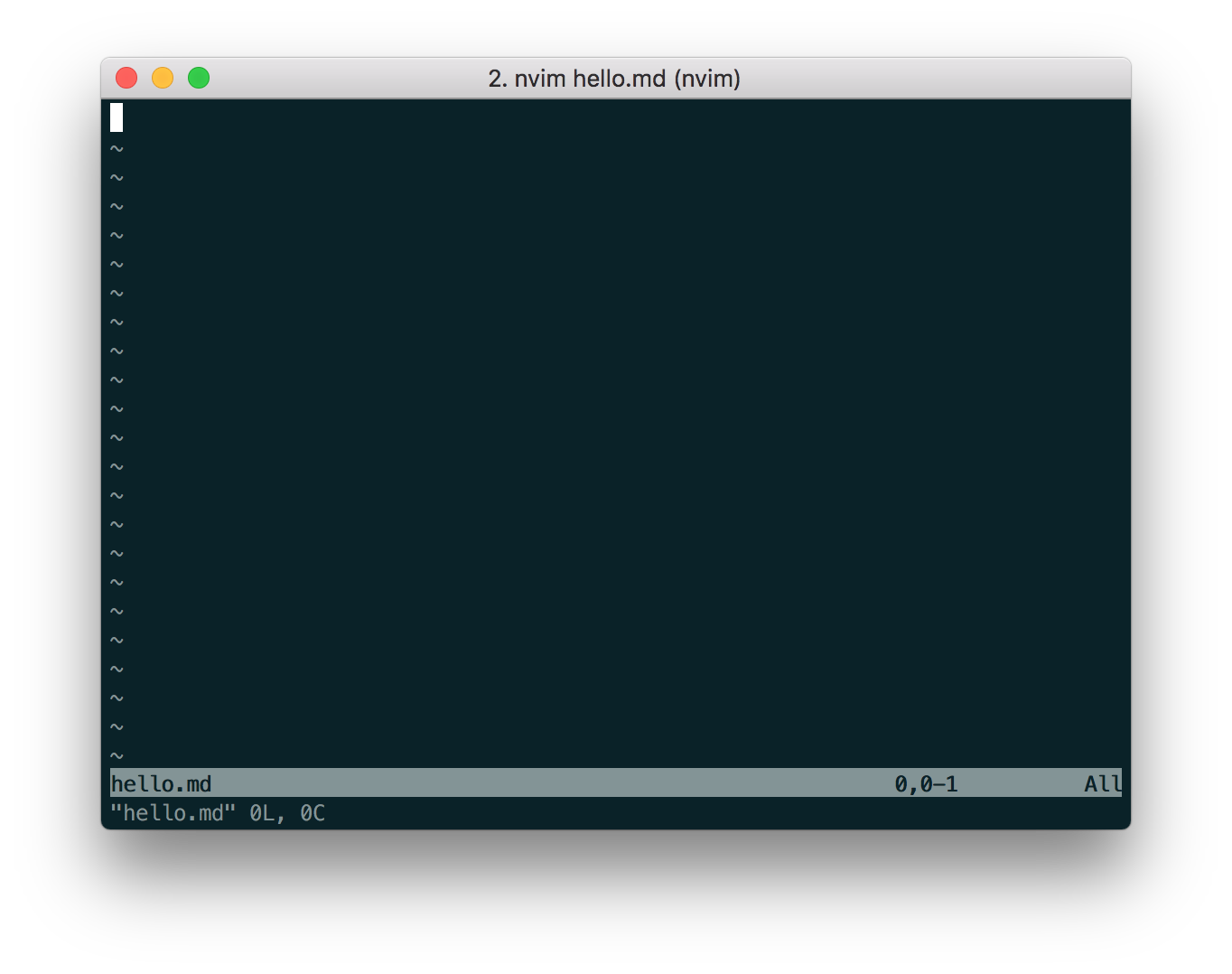
Things to note:
- the file name is displayed in the Message Line - "hello.md"
- the file details are displayed in the Command Line - there are zero lines (
0L) and zero characters (0C) - this file has not been "saved to disk" yet - we haven't saved
hello.mdyet
Insert Mode
We are currently in Normal mode. This means that we can't enter any text.
Let's enter Insert mode. Press "i"
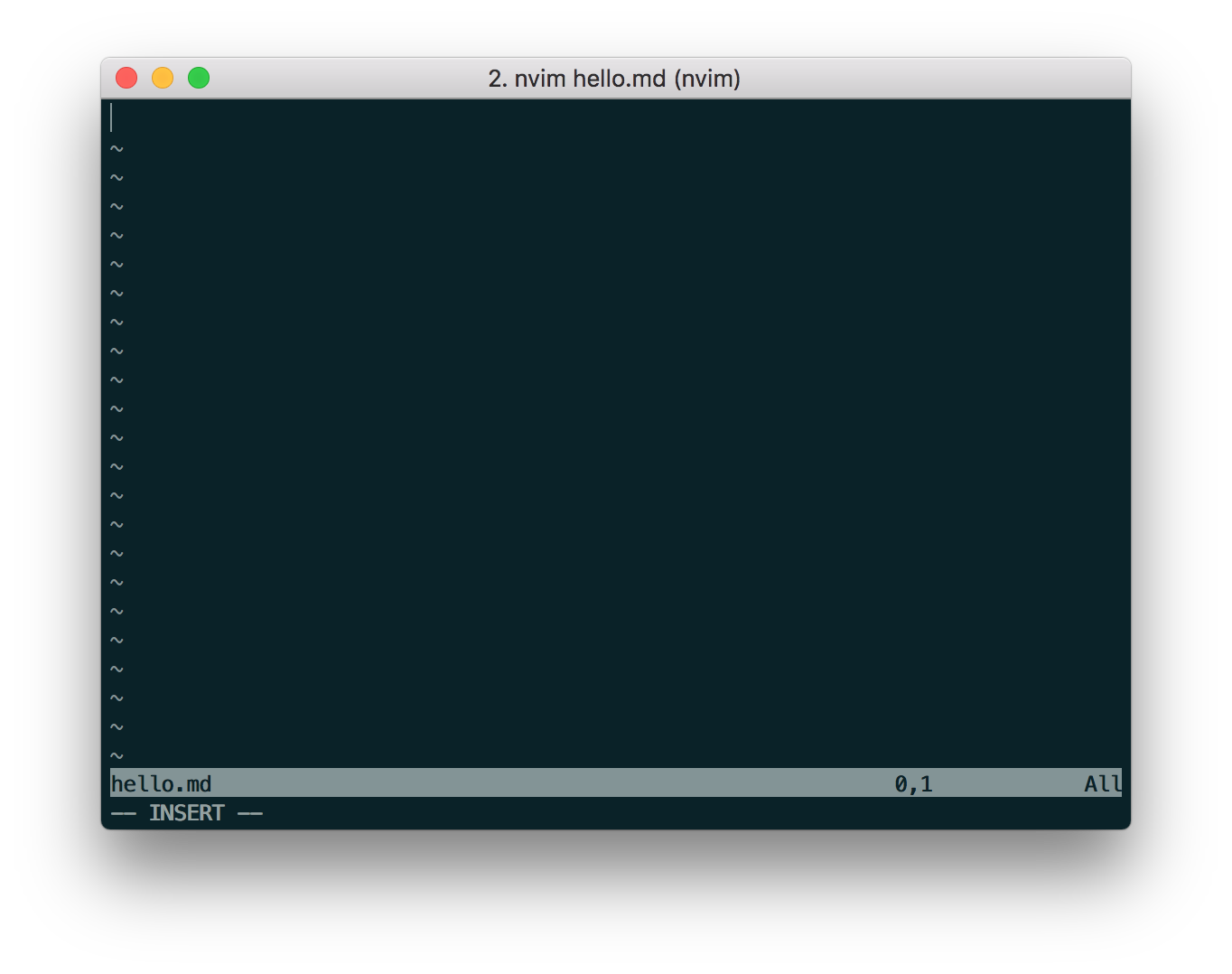
Things to note:
- Command line displays "--INSERT--", indicating that we are now in Insert Mode.
- The cursor has changed to a thin vertical bar, another indicator that we are in Insert Mode
Insert text
Type a couple of lines
Hello there!
Happy days with Vim.
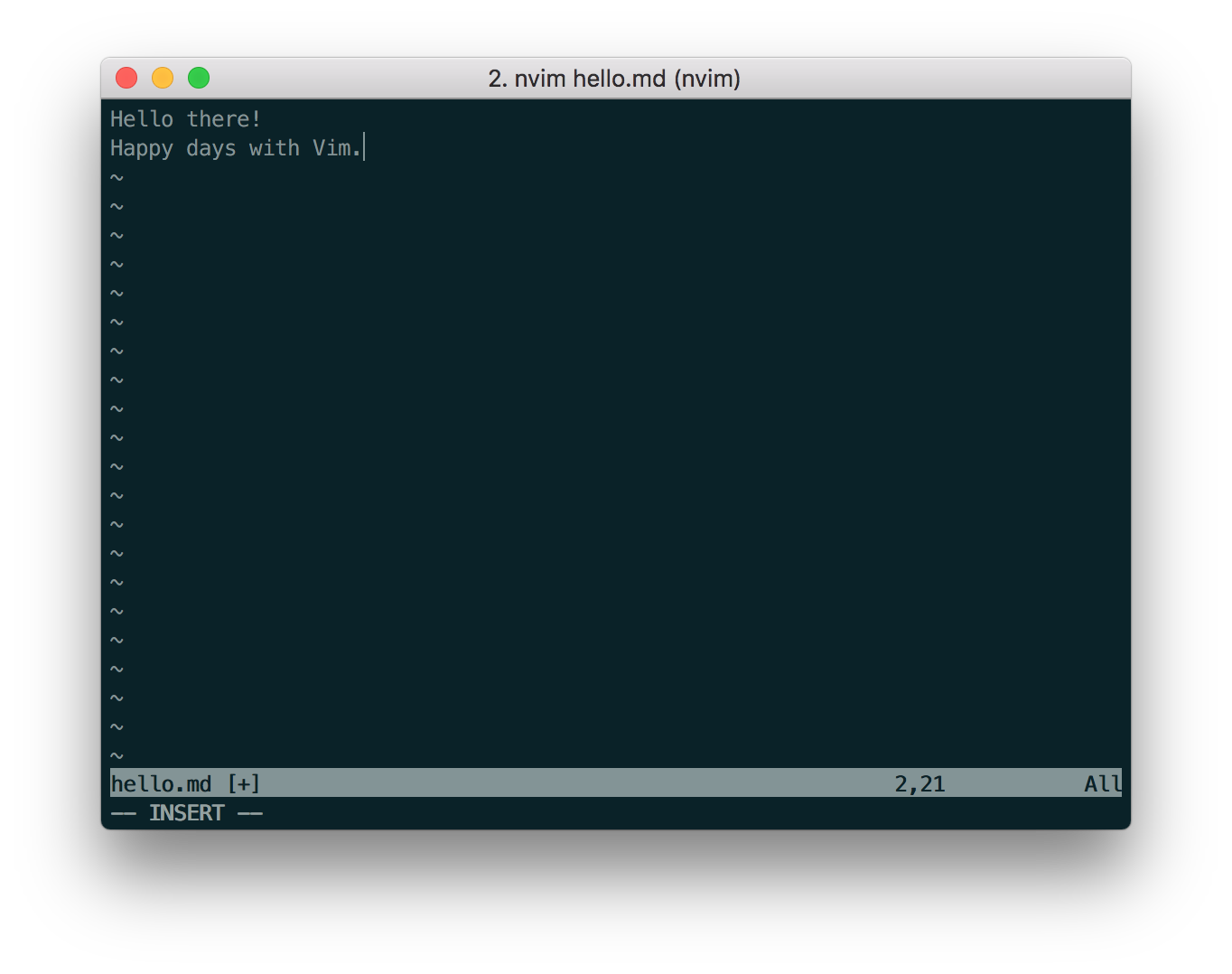
Normal Mode
Now let's save our file (write to disk).
First, we need to exit Insert mode, and re-enter Normal mode.
Press <Esc>
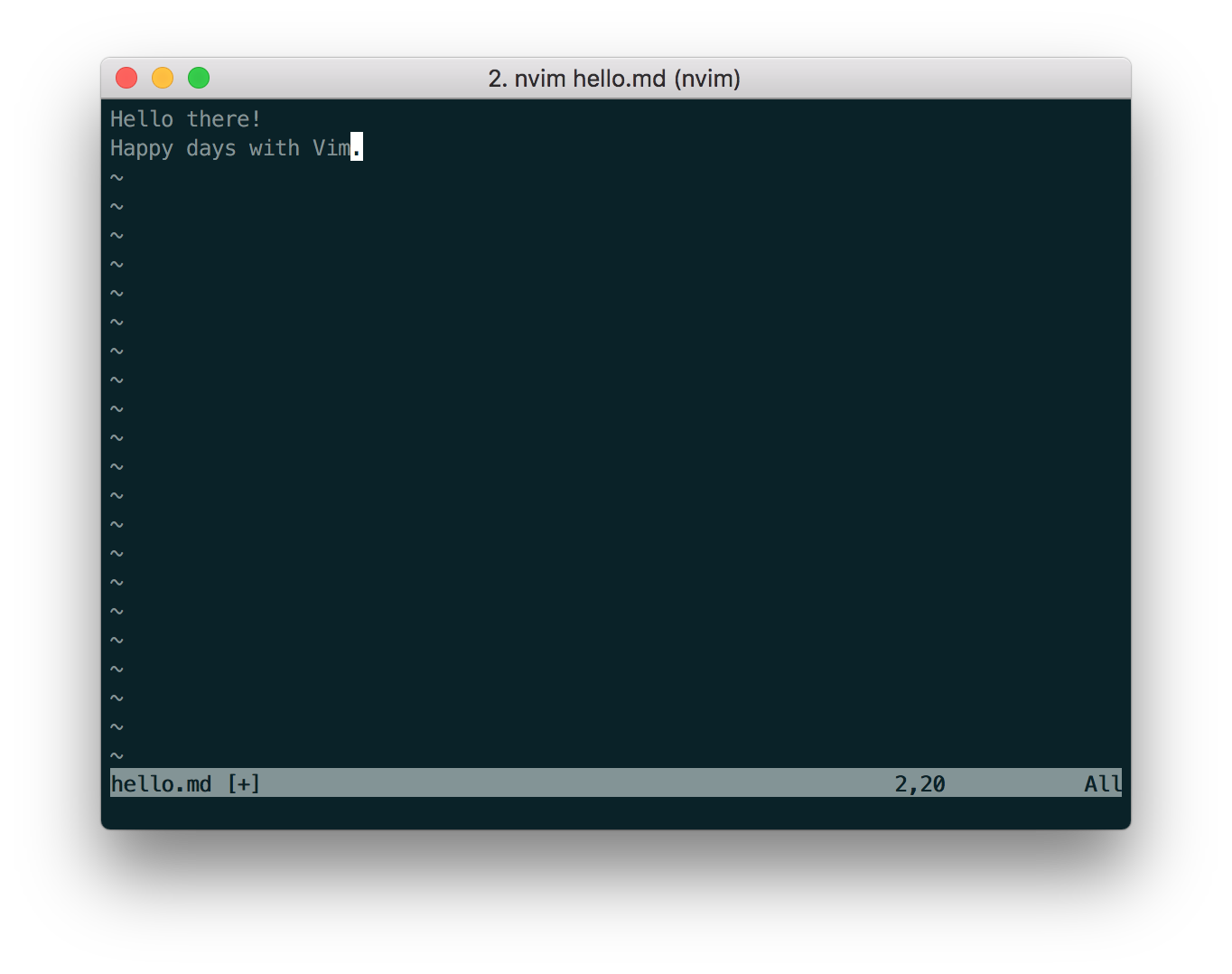
Things to note:
- The Command Line now shows nothing - we are now in Normal Mode!
Command Mode
Now we need to access the Command Line.
Press : to enter Command Mode.
Enter w, which stands for "Write" (save).
:w
Press <Enter>
We should see something like:
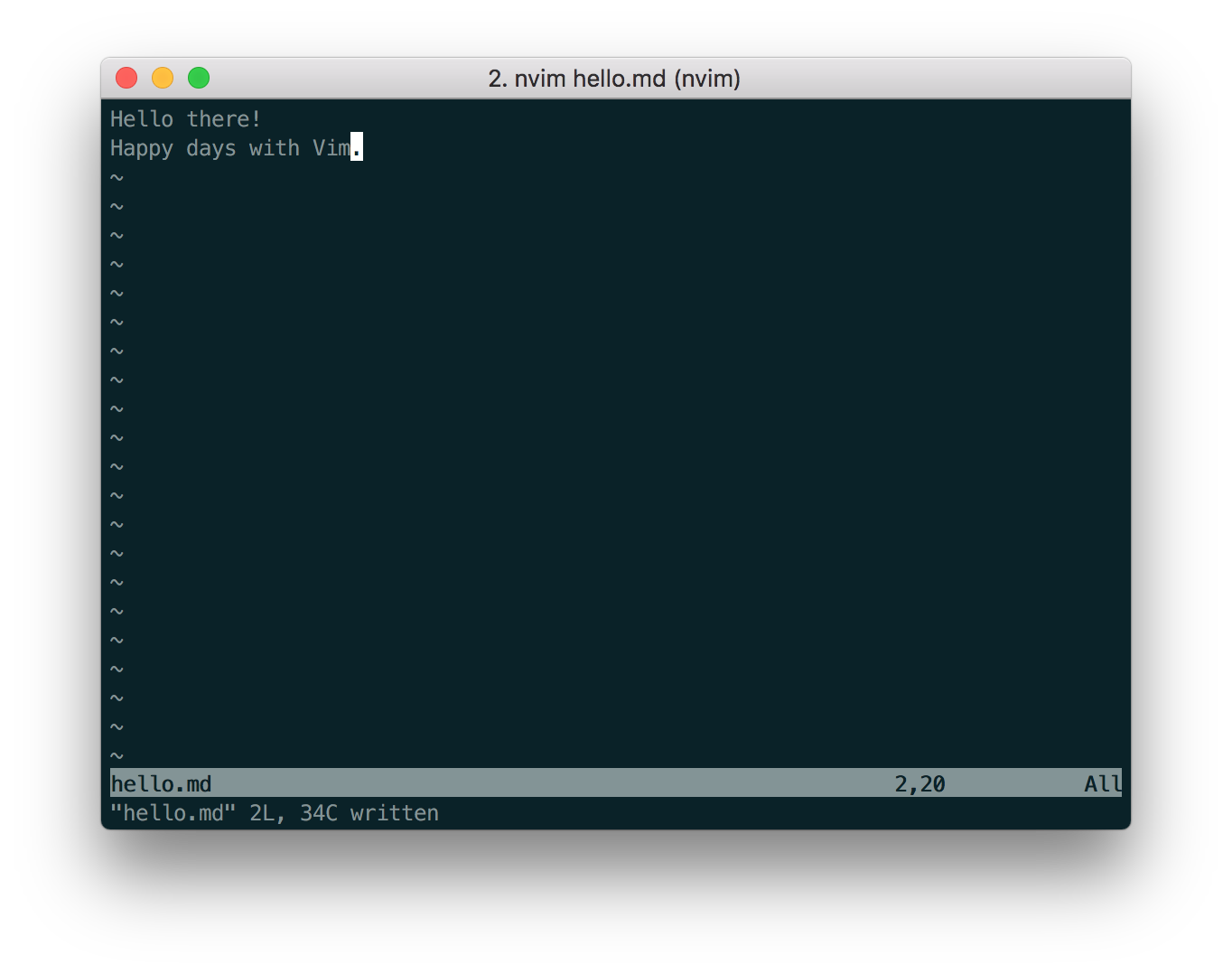
We have now saved our file!
Things to note about the information displayed in the Command Line
"hello.md" [New] 2L, 25C written
- The file "hello.md" was saved
- It was a new file
- 2 lines were added
- 34 characters were added
Quit
Now that we have saved the file (written to disk), we can quit!
:q
We should now be back in the terminal.
We can confirm that our file exists:
$ ls
We should see our hello.md in the directory contents!
----
Save and quit
We can combine the write and quit commands to achieve this
:wq
Force quit (without saving)
If we are completely sure we want to close a file without saving, we can do this:
:q!
Exercise
Make another file icecream.md, write a flavor of icecream in it, save, and
exit.